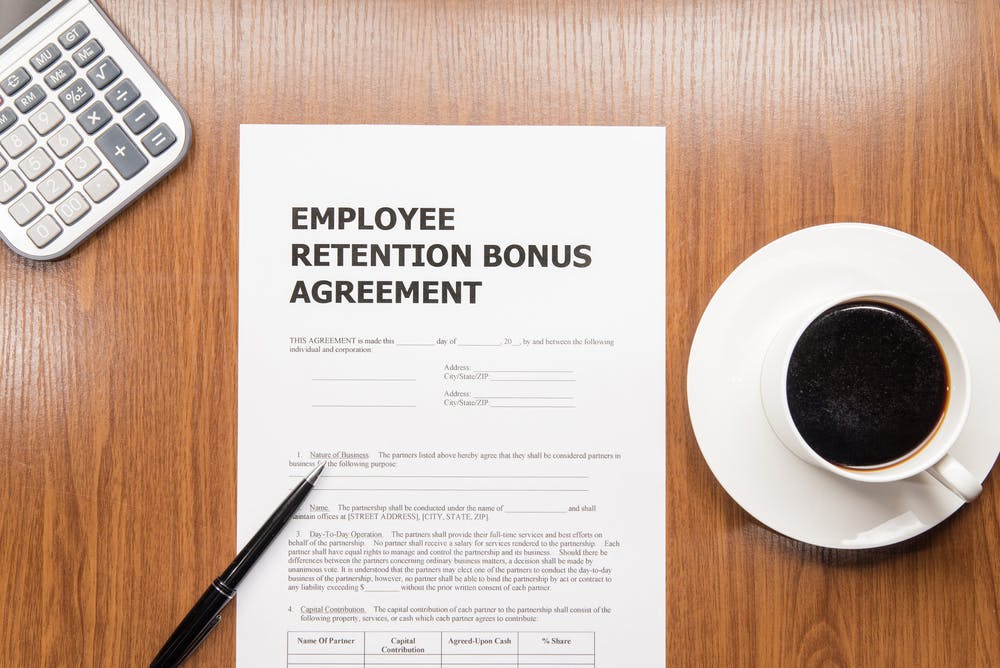The Bureau of Labor Statistics reports that 2.8 million people quit their jobs in March 2015, putting it back to pre-recession levels.
This is expected to accelerate as employees grow more confident in the economy amid a rising number of job openings.
That’s why employee retention should really worry companies, from a talent drain perspective and from a competitive standpoint.
Why retention is so critical
For employees, this is now “their time” to make a move. They’ve worked in poor work environments, received a small or no raise at all, and have put up with pressure on productivity and high levels of stress in the workplace during the recession. Now the tables have turned and it’s fast becoming an employee-driven marketplace.
An increase in voluntary turnover is disruptive to the business, causes the organization to lose focus and increases recruiting time and costs. It also makes it far more difficult to meet your revenue target and other goals if the employees delivering on those goals are constantly churning.
Smart companies are looking at this trend and putting resources and programs in place to reduce their voluntary turnover levels. It is far more cost-effective to retain a good employee than search for a replacement.
Here are five (5) suggestions to help improve your employee retention:
1. A compensation bump can increase your retention
Compensation is an important component in an employee retention strategy, but it is by no means the only factor. If the environment is toxic, or highly stressful, higher wages only go so far.
Most employees (who remained working) bore the brunt of the recession through stagnant wages. These workers often faced increased out-of-pocket medical deductibles, higher prescription costs, and an overall increase in the cost of living — with little or no compensation increase.
While the majority of workers were simply happy to have a job when there was a 10 percent unemployment rate during the recession, their costs kept going up and the actual buying power of their wages slipped.
As the economy has recovered, and your business is picking up, now is a good time to review employee compensation and reward employees for their productivity over the past several years.
2. Offer additional benefits as a retention strategy
Look beyond pay and health insurance. There are many additional benefits that can be added at little or no cost to the company, which serve to boost to morale, improve the work environment and interject some fun into workplace after some tough years:
- Transit subsidy for urban based businesses;
- Adding a Vision program;
- An FSA (flexible spending account) or HRA (health reimbursement account) program;
- Museum passes or sports tickets;
- On-site services like dry cleaning;
- Discount buying/shopper programs;
- Preferred parking for a month;
- Company outings;
- Company lunches;
- Work at home policy;
- Company assigned devices (smartphones, iPads);
- Employee recognition.
3. Referral program
Employees like to surround themselves with like-minded peers. An effective referral program rewards the employee for bringing in a high quality candidate, and serves a side benefit – it improves employee retention.
This is a great way to grow your workforce and keep existing employees.
4. Training and learning programs
Many employees leave for greener pastures because they feel “they are going nowhere” in their current job. When a company invests in training, it helps improve the employee’s skill set and bolsters their outlook that they are improving and growing with the company.
Further, this increases the likelihood they will stay because the company is investing in them. This is a no brainer that’s good for the employee and the company, yet many companies mistakenly make this a low priority.
5. Review (and fix) internal procedures
Sometimes it’s the little things that frustrate employees. Part of your strategy should include looking at your workplace from the employees’ point of view.
Do your policies and procedures place obstacles in their path or make it difficult for them to do their jobs? Are they spending too much time filling out forms or getting multiple approval signatures?
Walk through this scenario: How does an employee go about getting office supplies?
Do you require that a form is filled out? Does it require multiple levels of approval? Is there a big delay in getting what they need or can they just go to a closet or store and get what they need?
An employee survey might also uncover some troublesome internal procedures. Take the approach of “How can we improve?” and “What do you like the most and least about working here?” Be sure to make the survey anonymous so you get better and more honest results.
Some other suggestions
Check with job applicants too. Ask them what have they heard about the company? What did they like at past companies? You might get some great new ideas.
And don’t forget to check your Glassdoor ratings! You might have some influence over some of the negative things posted about your company. Use those comments as an opportunity to improve.
If you do start to experience voluntary turnover, it is wise to implement exit interviews. Many times, employees will be honest and open up when they are already on their way out the door. It can be a big eye opener, especially for the small business owner, who may not be aware of issues, and it will help everyone recognize trends.
Need other ideas? Check out these other employee retention strategies.
There are actually a lot of things you can do to improve employee retention. Start by focusing on workplace culture, make your employees feel appreciated, invest in training and seek to continually improve — and employee retention may never be an issue for your company.
This was originally published on the MassPay blog.
